Every once in awhile, I stumble upon a pen that is just kind of cool. The Camlin 47 is not fancy or expensive–far from it, actually–but it has a lot of things going for it.
The Camlin 47 is an inexpensive Indian school pen, made by the Kokuyo Camlin company. The easiest way to get one in North America is to buy it from Fountain Pen Revolution (no affiliation) where it retails for $14, but occasionally they’ll show up on eBay or similar for a couple of bucks directly from India. FPR charges more because of the convenience of ordering from a US retailer, plus they inspect their pens before selling them. However, this pen is sold in India for around ₹20–give or take 30¢–or at least that’s the going price on amazon.in. Now, one isn’t going to be able to pay 30¢ for a Camlin 47 because of the cost of international shipping–short of flying to Mumbai and buying one in person, of course–but hopefully that puts this little pen into perspective.

For the price, the user is getting a pen that writes well with a fine, rigid hooded nib. The ink keeps up nicely due to the pen’s ebonite feed. It fills with a piston and has an ink window to monitor ink levels. A piston filler or an ebonite feed usually means a higher price on other pens, but this pen has them as standard equipment.
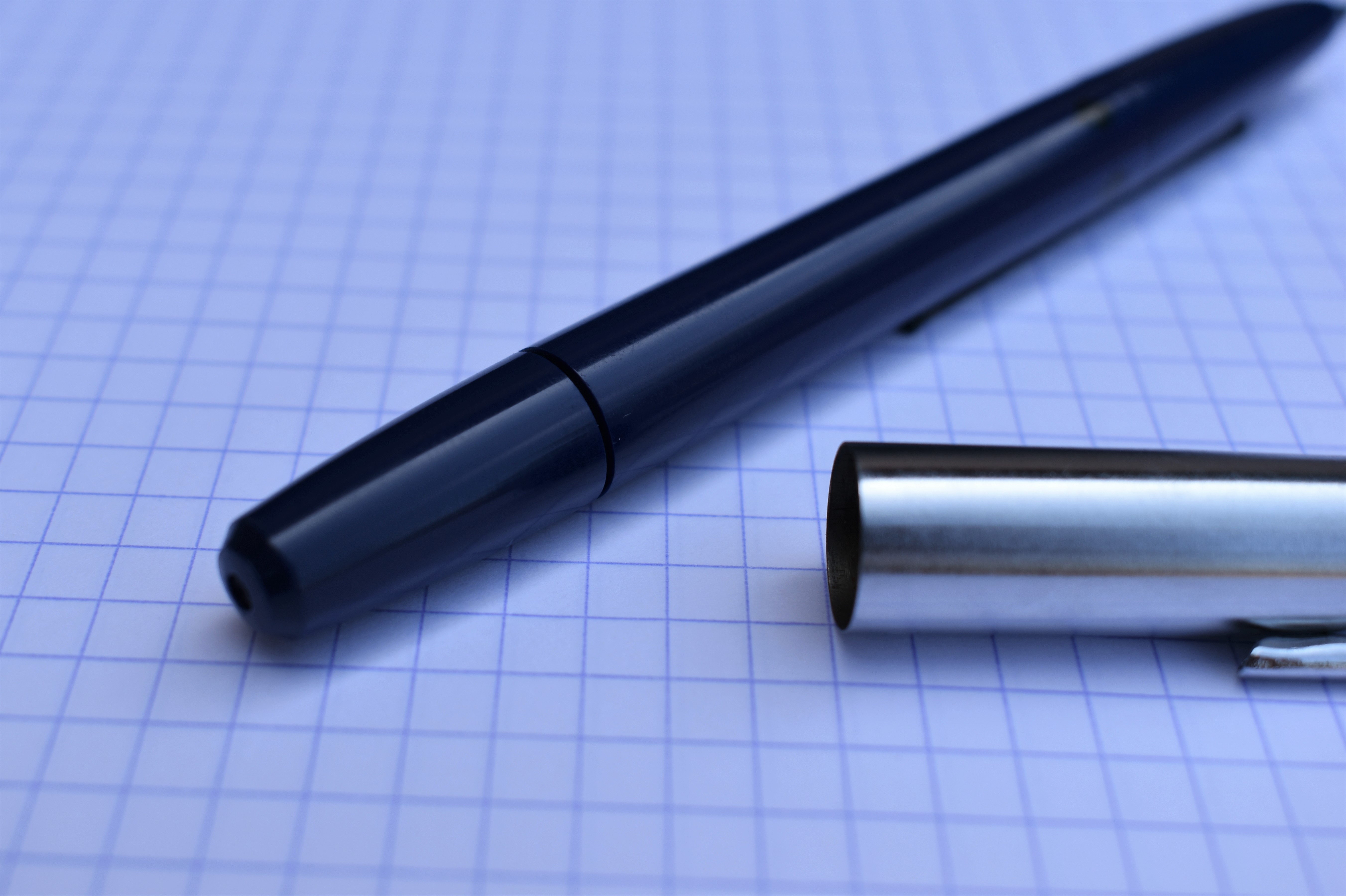
The pen is thin, so it doesn’t have a huge ink capacity. The balance is on point and it’s nice to write with, posted or not. I don’t like to write unposted because it’s pretty short and the cap is (probably) aluminum so posting it does not disrupt the pen’s balance. It’s a fantastic poster, actually.
The fit and finish are not that great. The fit is practical and uninspiring–for instance, the joints between the piston knob and the barrel and the section and the barrel are basically close enough, but still obvious to the eye and to the touch. The finish is especially rough. The pen body is barely polished. The cap is fairly well finished, but its opening is pretty rough and the clip’s “ball” is just folded steel. It’s pretty sharp and I’ve damaged a shirt with the clip, so care must be taken when clipping it to something. My Camlin will dry out if left unused for a few days, which tells me that the cap isn’t very airtight.
Cheaper Indian pens–including this one–are usually made from inexpensive vegetal resin, which off-gasses and has a lingering odor. People tend to not care about the smell, sentimentally associate it with their grandfather’s screwdrivers (which had handles made from the same material) or find it very offensive and akin to vomit or cheese. The smell fades over time but never really goes away. I’m not crazy about the smell, but I deal with it.
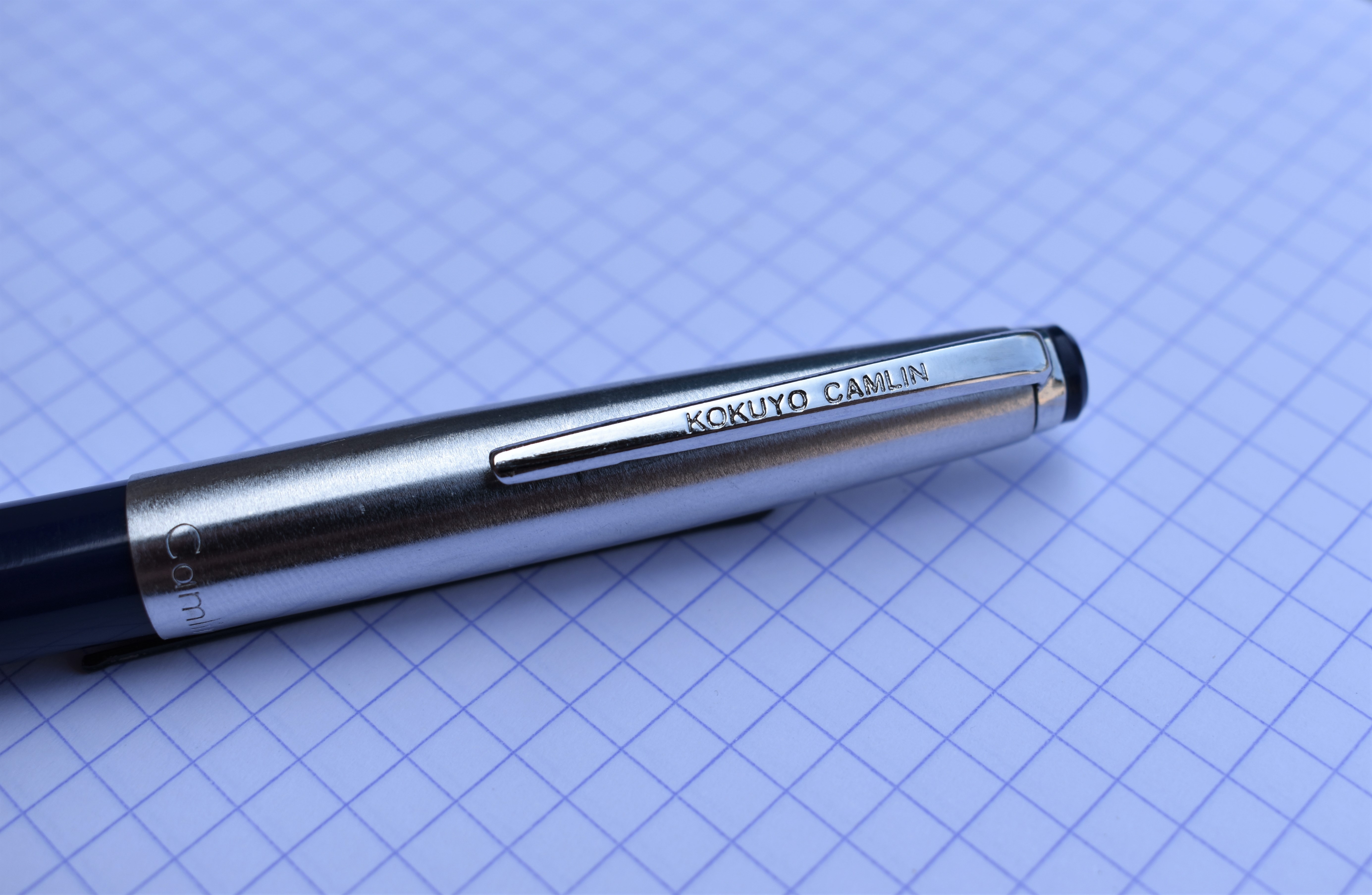
For the price, I think this is a solid, reliable workhorse and this is what the pen is intended to be. It has its issues, but I try to evaluate them with the right mindset–it’s a 30¢ pen. It certainly won’t be the same quality as a $50 or $100 pen. The sub $20 category features a lot of cool fountain pens, but this is one of my favorites of the bunch.
Ultimately, the Camlin 47 is one of India’s fancier domestic school pens, but it’s still a cheap, utilitarian pen. There is a thriving fountain pen community in India and many interesting and beautiful pens are made there. I recommend checking them out.
Pros:
- Inexpensive.
- Practical.
- I like hooded nibs.
Cons:
- Smells weird.
- Fit and finish is okay. It’s a little rough around the edges, but acceptable for the price.
- Mine will dry out if left unused for a couple of days.
Specs:
- Cap:
- Push-on cap.
- Postable.
- Nib:
- Hooded fine nib. No other options.
- Uses an ebonite feed, which keeps up and performs well.
- Body:
- Injection molded vegetal resin.
- Navy, Maroon, Black, Blue, and Green options are available.
- Filling system:
- Piston filler.
- Small 0.7mL capacity.
- Length:
- Capped: 131mm
- Uncapped: 123mm
- Posted: 153mm
- Weight:
- Total: 13g
- Pen: 9g
- Cap: 4g
- Section diameter:
- 8-10.5mm
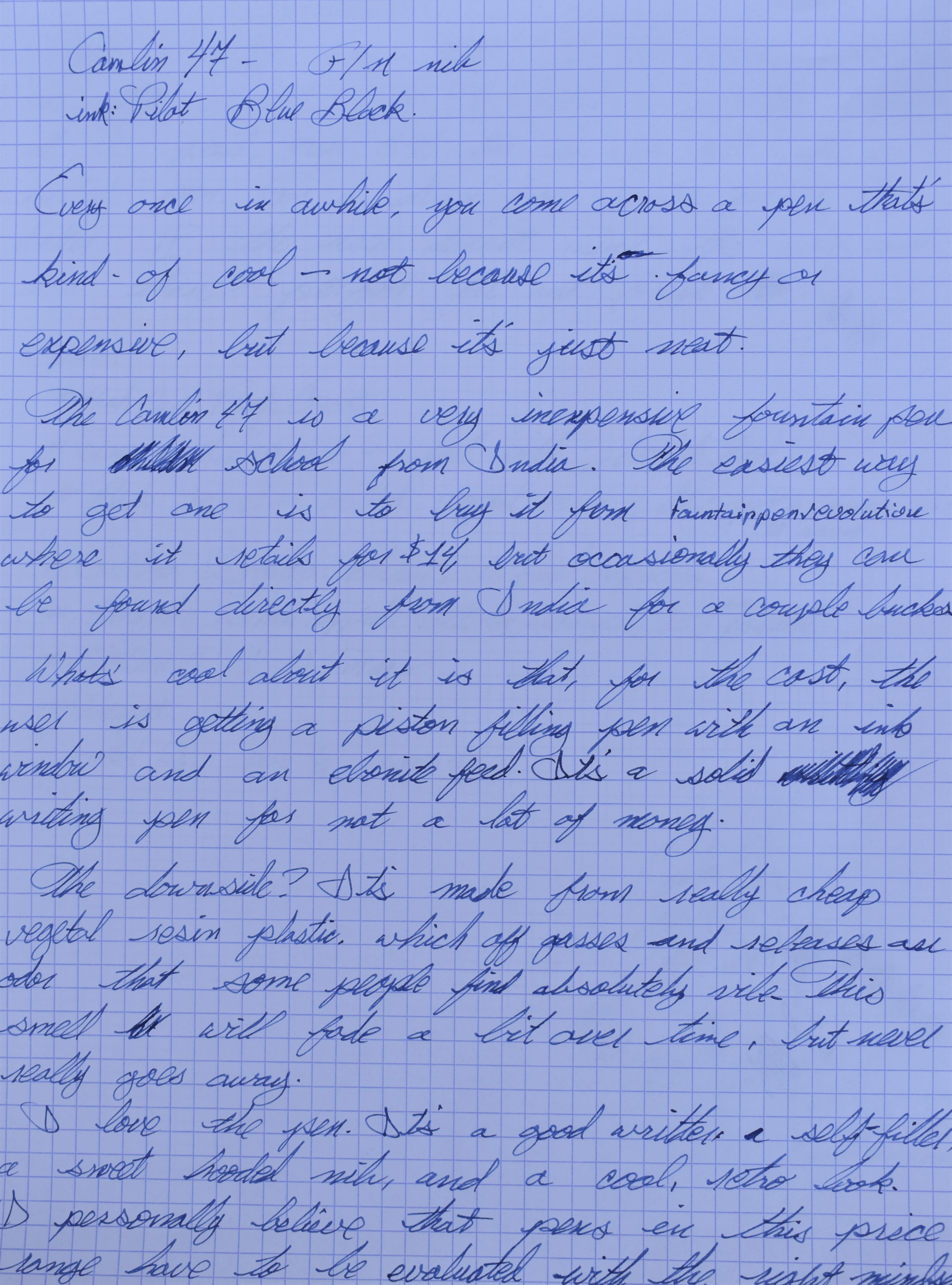
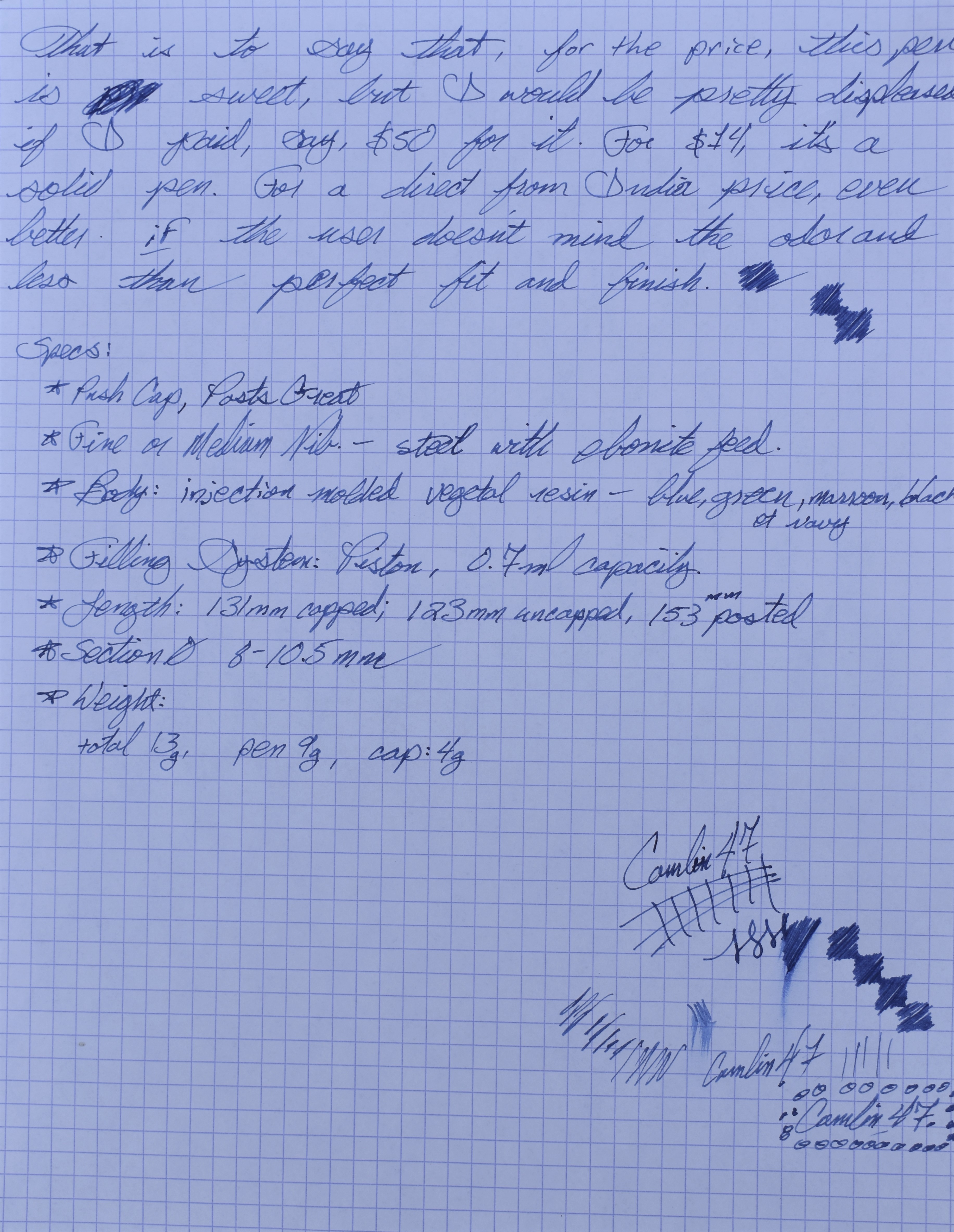
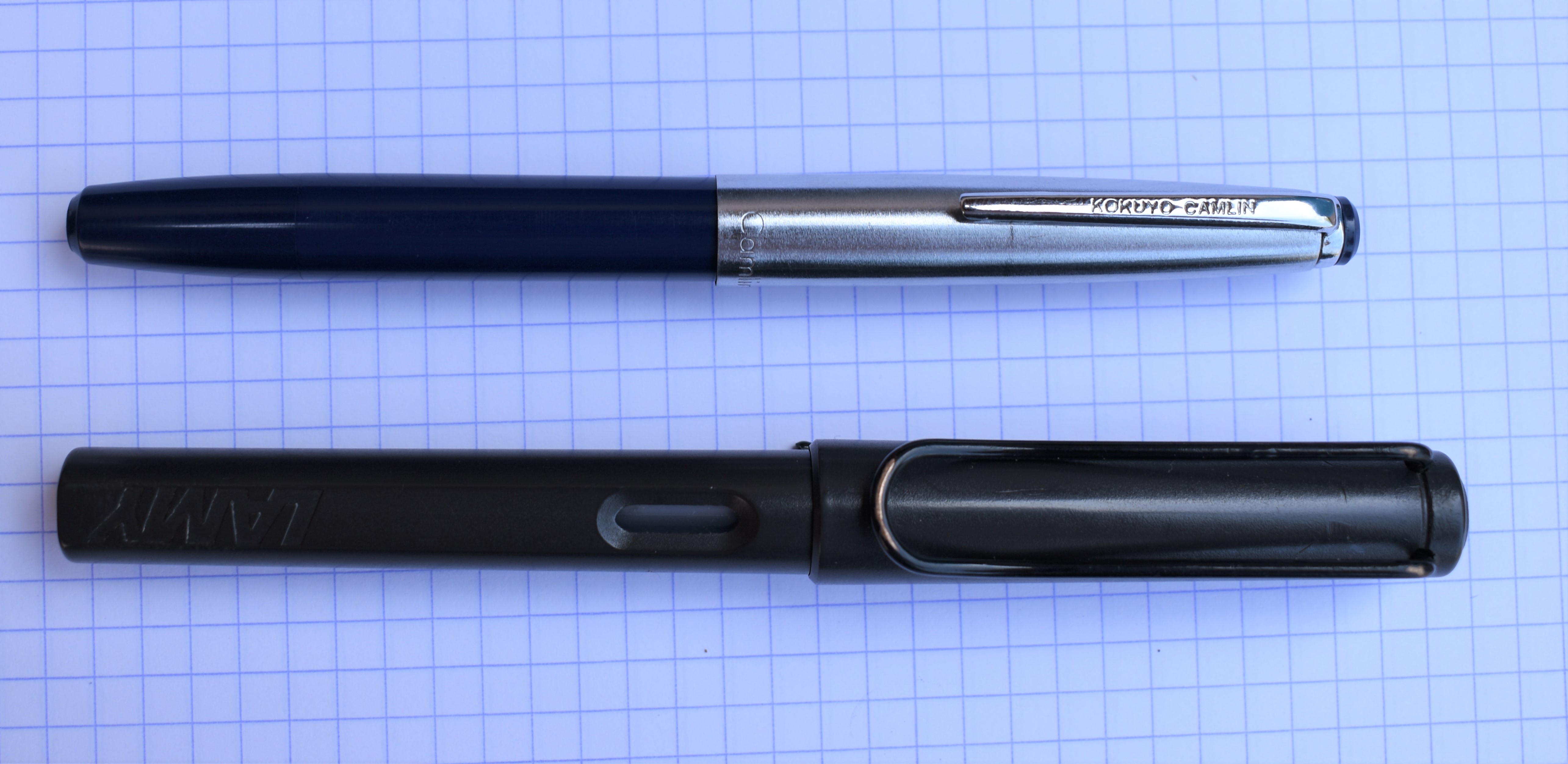
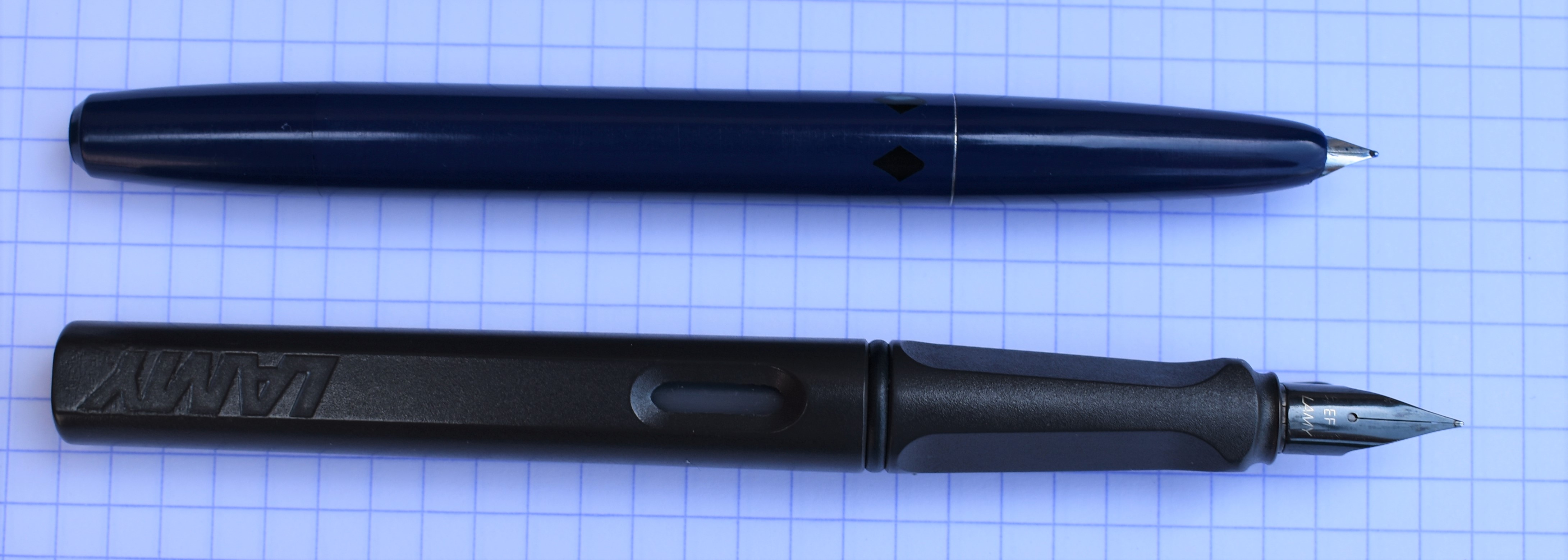
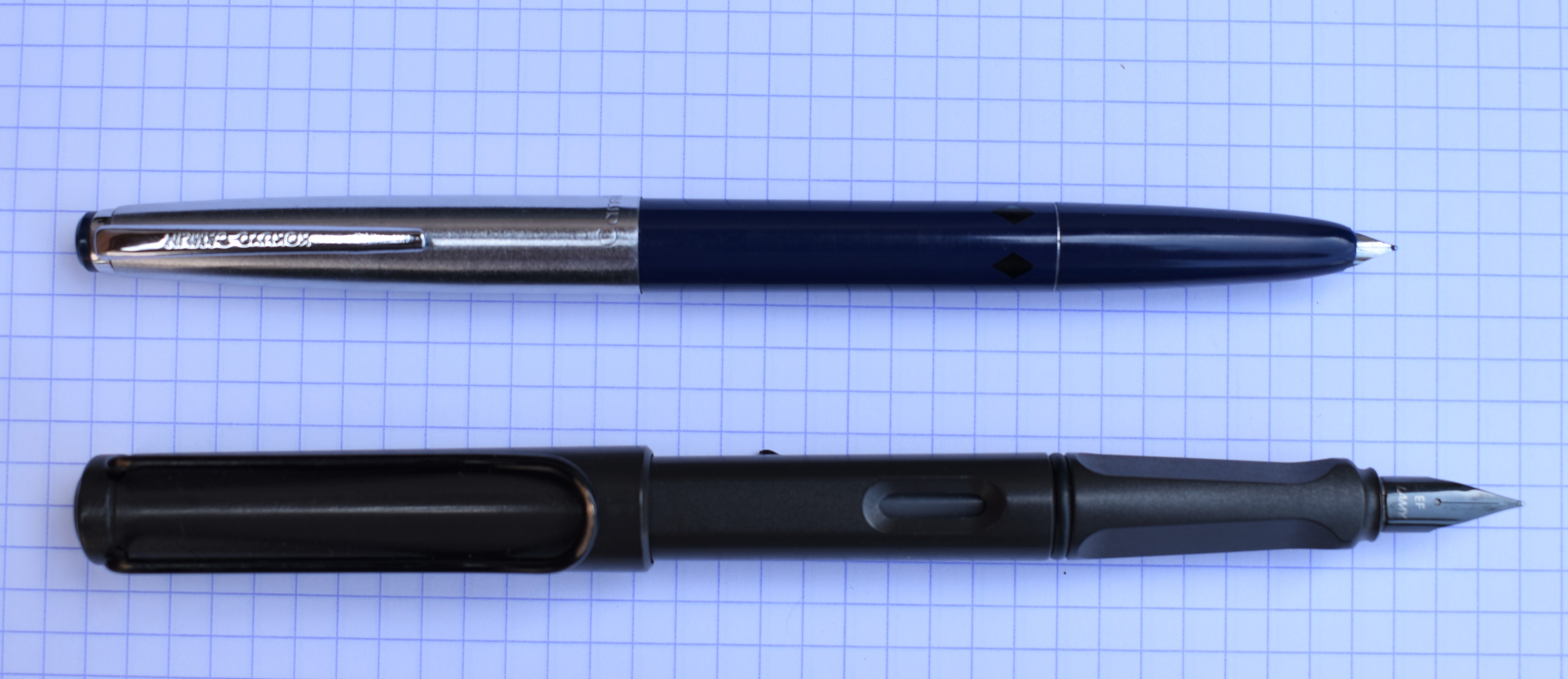
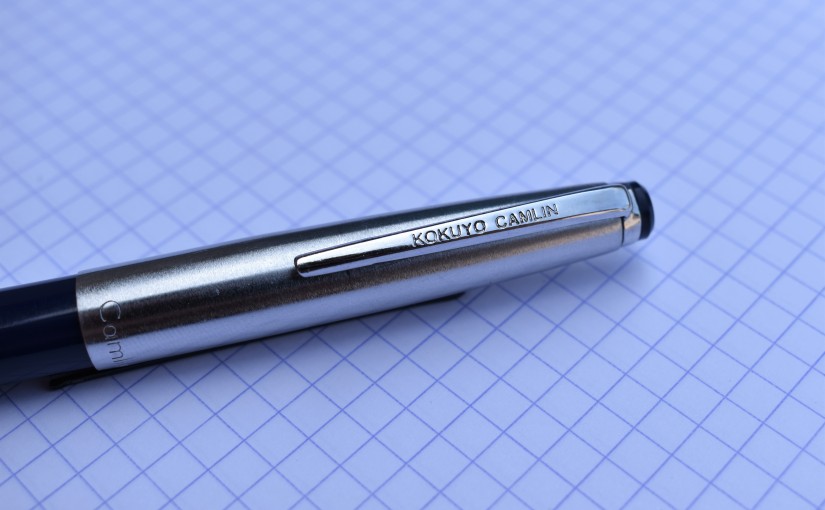
Cost in India is about ₹80, but sellers show more pens in their pictures which might have lead to ₹20 mentioned here.
About pen drying up: most indian fountain pen caps have a hole in the cap, presumably, to prevent pressure or vacuum build up during closing or opening. The pen has a plastic inner cap and there is a hole in it matching with that in the cap. One can remove the finial of the cap, which is a screw, turn the inner cap relative to the cap so that the two holes are not aligned. Tighten the finial in this position. With no direct hole in the cap the nib will not dry as fast as it originally did.
Hope this helps.
LikeLiked by 1 person
do we get spare or accessories online or any local market? i am from Bangalore, INDIA.
LikeLike